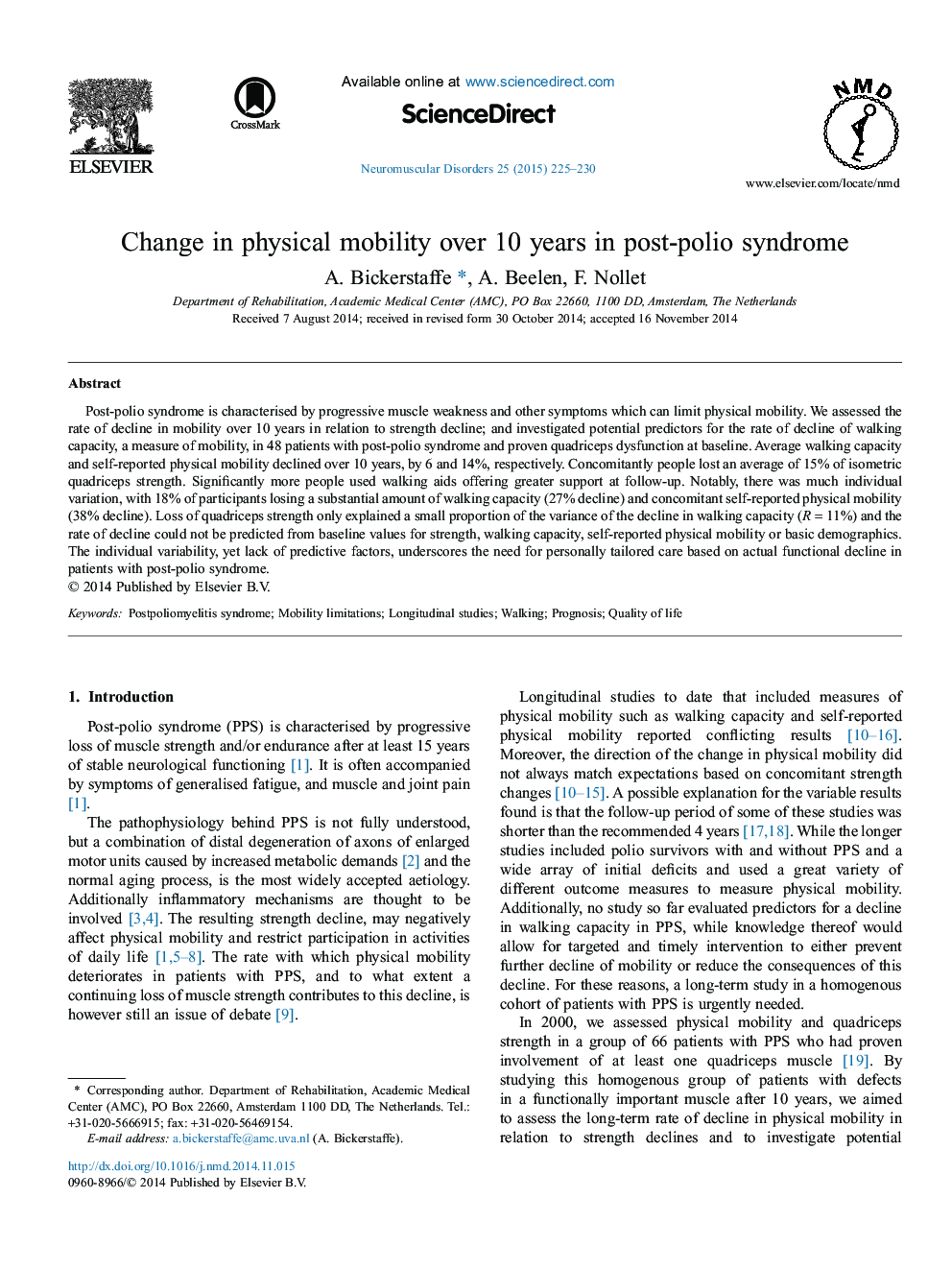| کد مقاله | کد نشریه | سال انتشار | مقاله انگلیسی | نسخه تمام متن |
|---|---|---|---|---|
| 3078865 | 1189273 | 2015 | 6 صفحه PDF | دانلود رایگان |
• The majority of post-polio patients experienced modest declines in physical mobility in 10 years.
• One-fifth of patients experienced substantial declines in walking capacity.
• The rate of decline in walking capacity could not be predicted from baseline quadriceps strength.
• These findings underscore the need for personally tailored care based on actual functional decline.
Post-polio syndrome is characterised by progressive muscle weakness and other symptoms which can limit physical mobility. We assessed the rate of decline in mobility over 10 years in relation to strength decline; and investigated potential predictors for the rate of decline of walking capacity, a measure of mobility, in 48 patients with post-polio syndrome and proven quadriceps dysfunction at baseline. Average walking capacity and self-reported physical mobility declined over 10 years, by 6 and 14%, respectively. Concomitantly people lost an average of 15% of isometric quadriceps strength. Significantly more people used walking aids offering greater support at follow-up. Notably, there was much individual variation, with 18% of participants losing a substantial amount of walking capacity (27% decline) and concomitant self-reported physical mobility (38% decline). Loss of quadriceps strength only explained a small proportion of the variance of the decline in walking capacity (R = 11%) and the rate of decline could not be predicted from baseline values for strength, walking capacity, self-reported physical mobility or basic demographics. The individual variability, yet lack of predictive factors, underscores the need for personally tailored care based on actual functional decline in patients with post-polio syndrome.
Journal: Neuromuscular Disorders - Volume 25, Issue 3, March 2015, Pages 225–230
